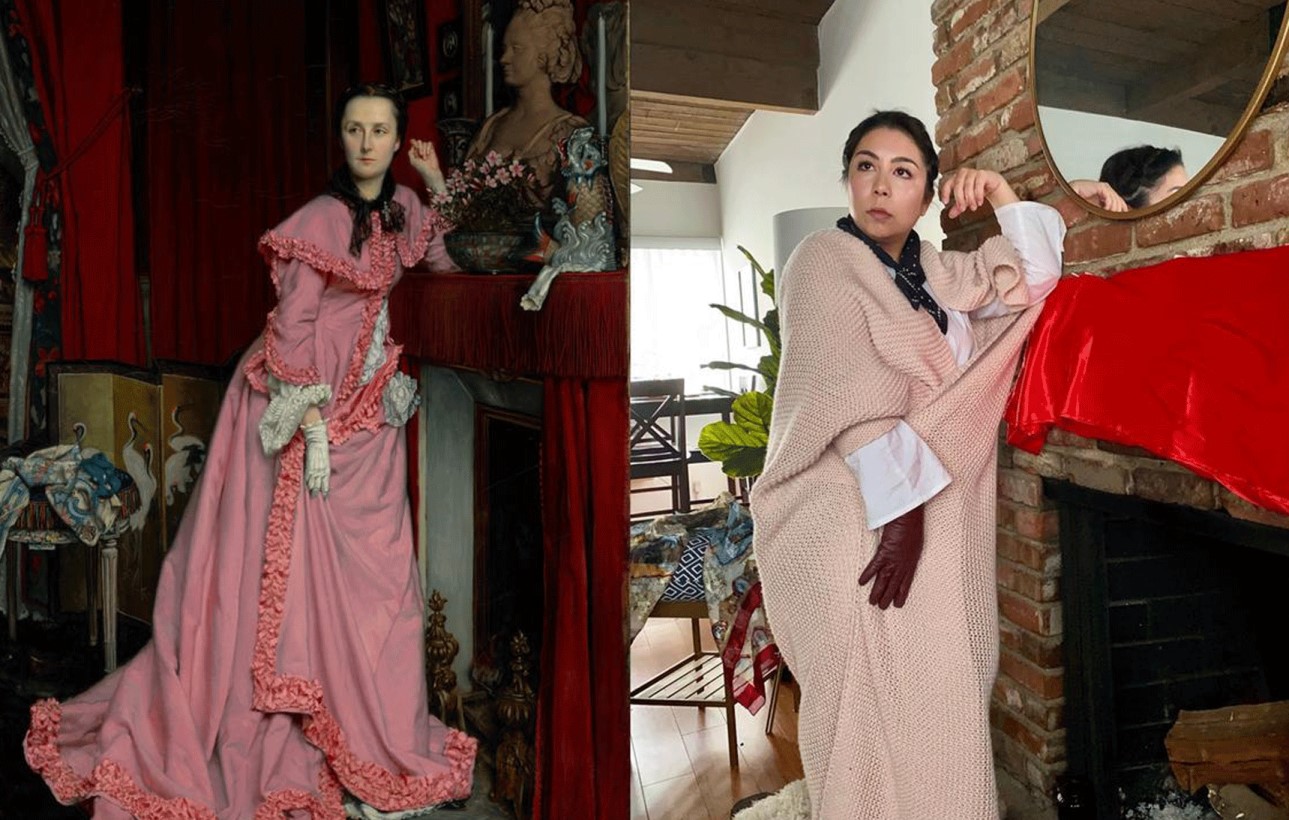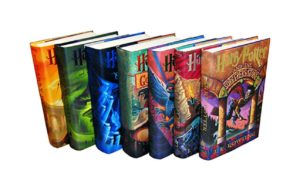The US museum and social media accounts are encouraging people to get creative during quarantine with humorous results
A call for creativity from the J Paul Getty Museum is getting people to recreate artworks at home using just household items, pets or themselves as the subjects.
Often referred to as the Getty, the museum is one of many institutions that has closed its doors to the public in mid-March due to the coronavirus pandemic, which has infected over 1.2 million people at the time of writing.
The Getty announced an online challenge on social media in late March with four simple rules: choose an artwork, find three items in the house, recreate the work and share the results.
Thousands of submissions began pouring in, ranging from the humorous – a pet pug recreating Johannes Vermeer’s Girl with a Pearl Earring or Jeff Koons’ Play-Doh rendered as a pile of socks – to the more composed, with people donning costumes and carrying props.
With most of the public confined indoors as a way to limit the spread of infection, people have shown off their imaginative sides with the challenge, making use of everyday items such as drapes, stuffed animals, pets, boxes, half-eaten sandwiches and even household appliances. One woman recreated a marble artefact from 2700-2300 BC of a male harpist using a vacuum cleaner.
The US museum borrowed the idea from the Dutch Instagram account, Tussen Kunst & Quarantaine (Between Art and Quarantine), which began posting on March 14.
So far, the account has over 137,000 followers, and the submissions have been equally amusing, such as a recreation of John Everett Millais’ Ophelia by a woman in her tub or the comparing Rene Magritte’s The Treachery of Images to a toilet paper roll.
Between these two challenges, lovers of Western art history will be quick to notice a number of key pieces from various art movements. There are Sandro Botticelli’s Birth of Venus, Magritte’s The Son of Man, Edvard Munch’s The Scream and a few Frida Kahlo works.
In Connecticut, a group of four roommates is running a recreation account of their own. Covid Classics, which was created on March 22, features images of Max Sutter, Jeannette Penniman, Cary White and Sam Haller, as they find ways to alleviate lockdown boredom. The roommates have made versions of Jan van Eyck’s Arnolfini Portrait, which shows an Italian merchant and his pregnant wife.
The group also share behind-the-scenes images of their recreations. For example, in an attempt to recreate the dramatic lighting of Jacques-Louis David’s The Death of Marat – their first post – the roommates used a lamp to illuminate the subject in the bathtub. Covid Classics has published 15 posts so far and have already gained almost 80,000 followers at the time of writing.
A call for creativity from the J Paul Getty Museum is getting people to recreate artworks at home using just household items, pets or themselves as the subjects.
Often referred to as the Getty, the museum is one of many institutions that has closed its doors to the public in mid-March due to the coronavirus pandemic, which has infected over 1.2 million people at the time of writing.
The Getty announced an online challenge on social media in late March with four simple rules: choose an artwork, find three items in the house, recreate the work and share the results.
Thousands of submissions began pouring in, ranging from the humorous – a pet pug recreating Johannes Vermeer’s Girl with a Pearl Earring or Jeff Koons’ Play-Doh rendered as a pile of socks – to the more composed, with people donning costumes and carrying props.
With most of the public confined indoors as a way to limit the spread of infection, people have shown off their imaginative sides with the challenge, making use of everyday items such as drapes, stuffed animals, pets, boxes, half-eaten sandwiches and even household appliances. One woman recreated a marble artefact from 2700-2300 BC of a male harpist using a vacuum cleaner.
The US museum borrowed the idea from the Dutch Instagram account, Tussen Kunst & Quarantaine (Between Art and Quarantine), which began posting on March 14.
So far, the account has over 137,000 followers, and the submissions have been equally amusing, such as a recreation of John Everett Millais’ Ophelia by a woman in her tub or the comparing Rene Magritte’s The Treachery of Images to a toilet paper roll.
Between these two challenges, lovers of Western art history will be quick to notice a number of key pieces from various art movements. There are Sandro Botticelli’s Birth of Venus, Magritte’s The Son of Man, Edvard Munch’s The Scream and a few Frida Kahlo works.
In Connecticut, a group of four roommates is running a recreation account of their own. Covid Classics, which was created on March 22, features images of Max Sutter, Jeannette Penniman, Cary White and Sam Haller, as they find ways to alleviate lockdown boredom. The roommates have made versions of Jan van Eyck’s Arnolfini Portrait, which shows an Italian merchant and his pregnant wife.
The group also share behind-the-scenes images of their recreations. For example, in an attempt to recreate the dramatic lighting of Jacques-Louis David’s The Death of Marat – their first post – the roommates used a lamp to illuminate the subject in the bathtub. Covid Classics has published 15 posts so far and have already gained almost 80,000 followers at the time of writing.
Closures across the arts and culture sector are expected to financially stifle museums and galleries. In New York, for example, where the number of US cases continues to rise, the Metropolitan Museum of Art expects to see $100 million (Dh367m) loss. The same fate awaits many other art spaces across the globe. A number of museums, such as The Getty, are turning to digital initiatives to stay connected to the public.
While relief from the anxiety and ennui of the pandemic is not yet in sight, some are finding a slight comfort in the act of creating and engaging with art.
www.thenational.ae




